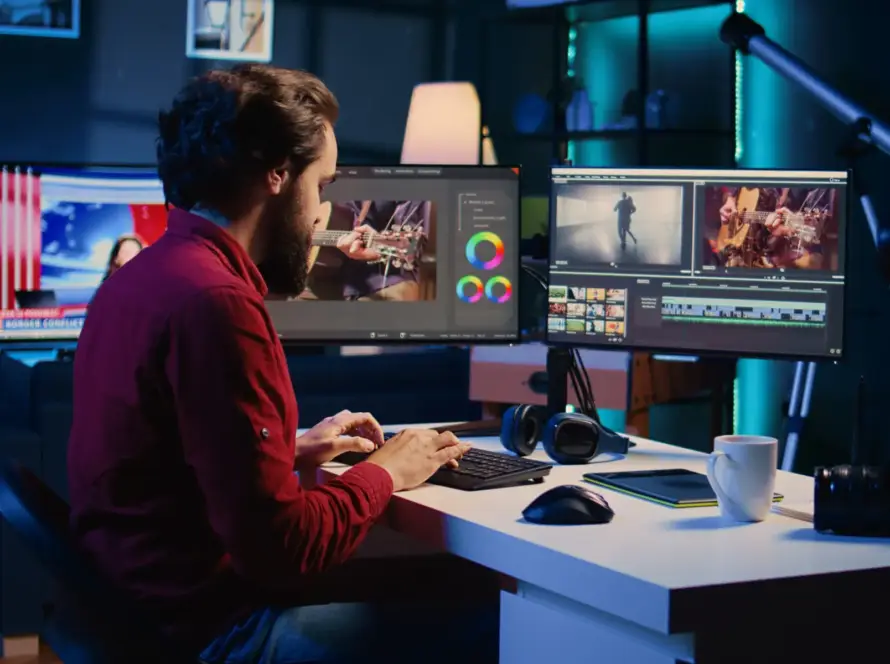In a constantly evolving digital landscape, having a website that adapts to every screen and loads in the blink of an eye is now a strategic necessity. Leveraging its expertise in responsive design and bespoke development, PCS Studio Digital deploys a rigorous methodology to guarantee its clients ultra-high-performance websites. Discover below the key steps and best practices that make all the difference.
1. Needs Analysis and Competitive Benchmarking
Before writing a single line of code, PCS Studio Digital conducts:
- A UX/UI audit of existing sites and user expectations to identify friction points.
- A competitive benchmark to spot trends in responsive design and web performance within your industry.
- A precise definition of KPIs (load time, Lighthouse score, mobile bounce rate) to guide the redesign or new build.
Thanks to this preparatory phase, the team anticipates technical constraints and lays the groundwork for a project perfectly aligned with your business objectives.
2. Mobile-First UX/UI Design
PCS Studio Digital adopts a mobile-first approach to:
- Prioritize content: modular structure, clear hierarchy of headings and calls to action.
- Rapid prototyping: interactive wireframes in Figma or Sketch, tested on real smartphones and tablets.
- Adaptive design: flexible grids, SVG or WebP images, fluid typography (rem, vw/vh).
This process ensures an optimal user experience on every device while making it easy to scale up for desktop resolutions.
3. Technology Choices and Custom Development
To combine lightness with power, PCS Studio Digital selects:
- Modern HTML5 & CSS3 with preprocessors (Sass, PostCSS) for clean, maintainable code.
- JavaScript frameworks (React, Vue.js or Alpine.js) based on functional complexity and the client’s ecosystem.
- Utilities-first CSS libraries (Tailwind CSS or Bootstrap 5) to speed development without sacrificing customization.
- Headless architecture (decoupled CMS) to separate content from front-end and offer maximum scalability.
Every component is built using Atomic Design, encouraging reuse and rapid rendering.
4. Performance Optimization
An “ultra-performant” site is measured in part by its Google Lighthouse score. PCS Studio Digital implements:
- Compression and minification: CSS/JS with GZIP or Brotli, WebP images, lazy-loading.
- Smart caching: HTTP cache-control policies, Service Workers for PWA support.
- Content Delivery Network (CDN): multi-region deployment to reduce latency.
- Inline critical CSS: asynchronous loading of non-essential styles to improve First Contentful Paint.
- Code splitting and tree shaking: loading only the code needed for each page.
5. Testing, Accessibility, and Technical SEO
Beyond raw performance, PCS Studio Digital ensures your site is:
- WCAG 2.1 accessible: keyboard navigation, compliant contrast ratios, ARIA labels where needed.
- On-page SEO optimized: semantic markup (headings, alt attributes, schema.org), meta-title and URL optimization.
- Cross-browser tested: Chrome, Firefox, Safari, Edge, as well as the most common mobile versions.
6. Maintenance, Monitoring, and Scalability
Once live, the support continues with:
- Automated monitoring (uptime checks, Core Web Vitals tracking).
- Regular updates: security patches, functional enhancements based on your feedback.
- Monthly reports detailing performance metrics, mobile vs. desktop traffic, and ongoing improvement recommendations.
Conclusion & Call to Action
With PCS Studio Digital, every responsive, ultra-high-performance website project is backed by deep expertise in design, development, and optimization. Ready to adopt a web solution that converts and retains? Contact us today for a free audit and personalized quote.


